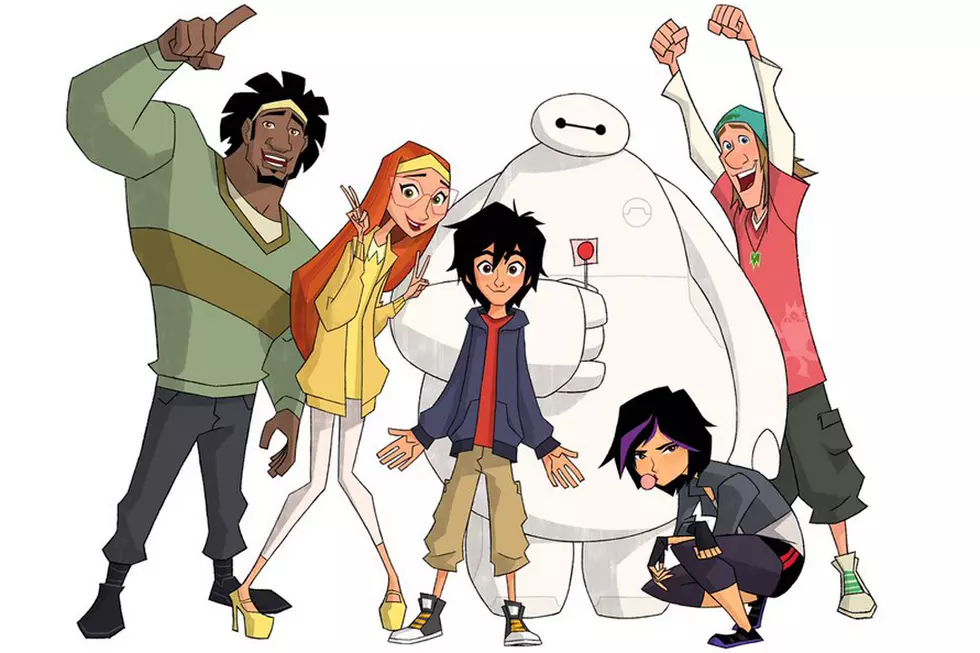
The Incredible Comedy (and Suicide Attempts) of ‘Mickey Mouse’ by Floyd Gottfredson

Even when I was a kid, I was never cared much for Mickey Mouse. I was always more into Warner's Looney Tunes -- especially the Chuck Jones cartoons -- and the Disney stuff I liked tended to be revolve around the adventures of Uncle Scrooge or Chip 'n' Dale's Rescue Rangers, the latter of which prompted my first and only purchase of an airbrushed t-shirt. What? It was 1990!
When I got older and people told me that there were actually a lot of great stories in the old Mickey comics, I figured that what they really meant was that they were great stories for comics about Mickey Mouse, and really, how good could that be? But then, after Fantagraphics put out a Free Comic Book Day book with one of the classic stories by Floyd Gottfredson that was enough to make me want to pick up their recently released hardcover, I ended up reading the whole thing. And as it turns out, it's not just a great Mickey Mouse comic, it's one of the best comics of all time.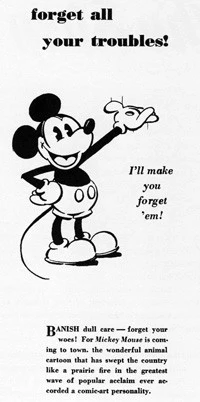 That's not just my signature hyperbole at work either. When Gottfredson took over the Mickey Mouse newspaper strip in 1930, he created stories that still hold up eighty years later as solid well-done comics. That alone would be an incredible achievement, especially considering how few stories from the era even seem readable to a modern audience, but Gottfredson takes things to an entirely different level with comedy that's still funny and adventures that are genuinely thrilling.
That's not just my signature hyperbole at work either. When Gottfredson took over the Mickey Mouse newspaper strip in 1930, he created stories that still hold up eighty years later as solid well-done comics. That alone would be an incredible achievement, especially considering how few stories from the era even seem readable to a modern audience, but Gottfredson takes things to an entirely different level with comedy that's still funny and adventures that are genuinely thrilling.
One of the things that really surprised me when I first started reading through the hardcover is that while Gottfredson's strips each contained a great punchline, they joined together to tell grand, sprawling stories that took months to play out. His first story, Race to Death Valley, took place over half a year to finish, kicking off with Minnie receiving a mysterious inheritance, spanning Mickey and Minnie's exploration of a creepy house besieged by bandits, escaping and desperately hitting the road in order to beat a crooked lawyer and his peg-legged sidekick to the source of the family fortune, getting jobs in a restaurant, running afoul of the law, and almost getting hanged by a posse of duped lawmen before it comes crashing to a halt with a twist ending. It's a big story, with each set piece flowing together in a way that would make screenwriters jealous, with the stakes getting higher and higher while Mickey, a perpetual underdog, fights his way out of them with a combination of cleverness and dumb luck.
And again, that's the story Gottfredson decided to do first.
It's seriously amazing stuff, both for the incredible scale of it all as the talent that went into making it work. Even with the huge story unfolding as they went by, each strip is a masterfully done example of how to create a single beat, with each one punctuated by alternating punchlines with scenes of danger that ratcheted up the tension. And he did it in different ways, too, both with wordplay that saw Mickey smarting off with a series of zingers on his costars...
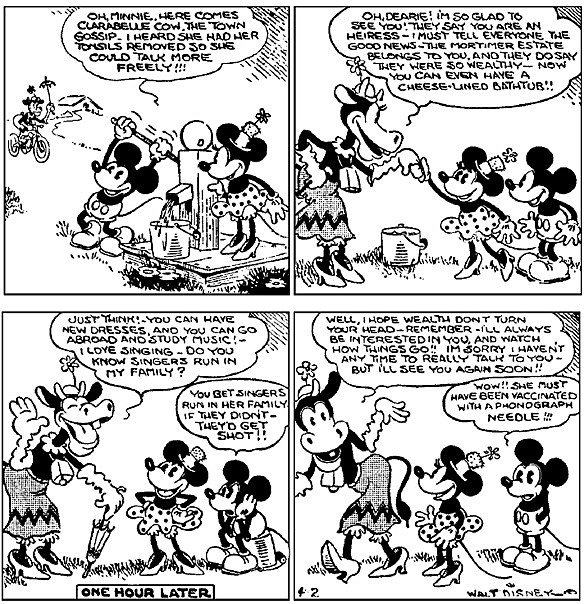
...or by creating great physical gags, something that can be pretty hard to pull off on a regular basis in comics:
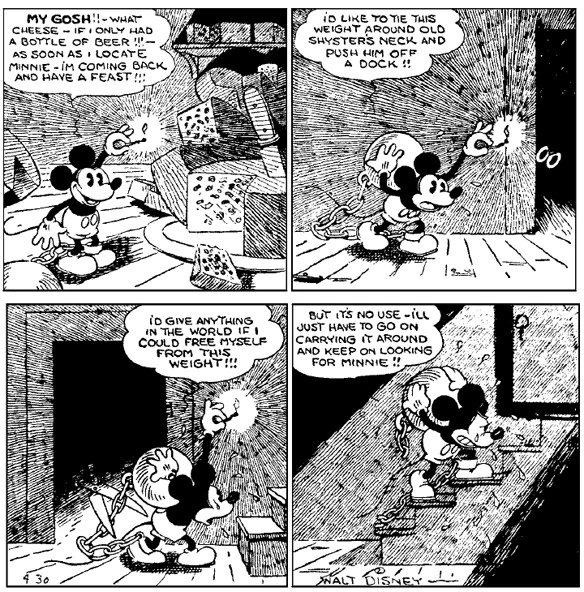
And even with the daily strip format, Gottfredson was able pull off a slow buildup over the course of his stories, bringing back throwaway gags and building them into major plot points. For example, there's a story later in the book where Mickey builds a miniature golf course out of farm animals in his yard. And now that I actually type that out, it seems like a pretty strange thing for a mouse to do, even a mouse who wears only shorts, shoes and gloves.
Anyway, one of the strips features a gag about one of his customers tearing a dollar bill in half to play a fifty-cent game, only to end up buying two rounds:
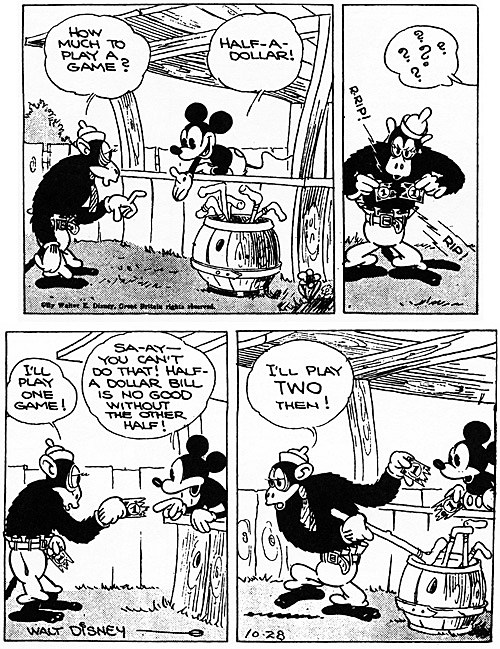
It's a pretty funny bit on its own, but that's not where it ends. While all this is going on -- the reason that Mickey decides to distract himself from his troubles by building a miniature golf course, in fact -- Minnie has started dating a rich guy (er, mouse) called Slicker who ends up taking advantage of her family farm's sudden hardships in order to pressure her father into pressuring her into becoming his wife. Mickey tries to bail Minnie's folks out of their trouble with a loan, but he can't get to his cash because Slicker has robbed the bank.
And they're able to prove it was him when he turns up with the dollar bill Mickey had to tape together when he got it from his mini-golf customer twenty-two strips earlier. It's a fantastic little payoff, and it's a great example of how intricate and complex Gottfredson's plots could be even when doing what started out as a series of lighthearted gags about a homemade golf course.
The other thing that surprised me about the collection was that it contained a week's worth of strips where Mickey tried to kill himself.
It happens in the same story, and according to the notes in the hardcover -- which are very well-written and include a foreword by Epic Mickey designer Warren Spector -- it was suggested by Walt Disney himself. Apparently Walt thought that there was a ton of comedic potential in the idea of Mickey becoming so despondent about Minnie going out with another guy that he tried to commit suicide five times.
And the crazy thing is, he was right. The strip that ends with Mickey glumly taking a shotgun down from its place on the mantel might be downright Funky Winkerbeanian, but the ones that follow, in which Mickey's halfhearted attempts go awry through a string of bad (good?) luck and a lack of commitment to the whole idea?
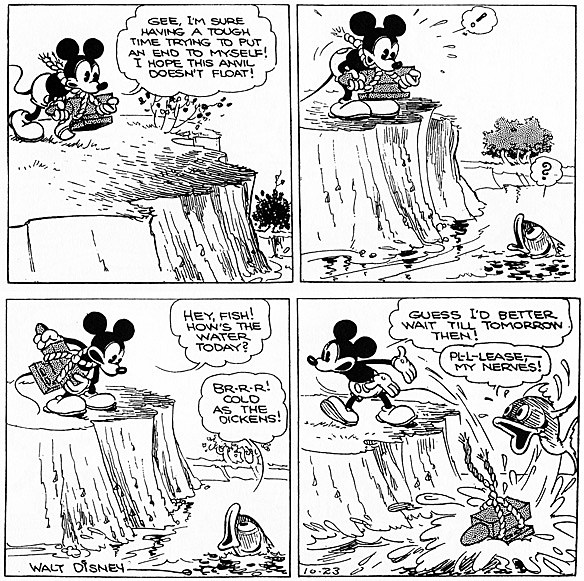
They're pretty darn funny. Especially when you consider that the decidedly kid-unfriendly nature of a story where Mickey Mouse -- Mickey Mouse! -- considers killing himself subverts pretty much every expectation I had for the character. And for good reason: Wringing laughs out of something that dark is a pretty difficult task.
The entire sequence only takes up seven strips -- including a similarly depressing setup that ends with Mickey walking down a dark street while crying! -- but it's the one that sticks out in my mind whenever I think about the book. It was certainly a side of Mickey that I've never seen before.
But it's not the only thing that changed my opinion of him. I'd never really thought of Mickey as an adventure hero, a smart-mouthed fast-talker, or a character that I'd like to read a whole lot of comics about either. But thanks to Gottfredson, I certainly do now.
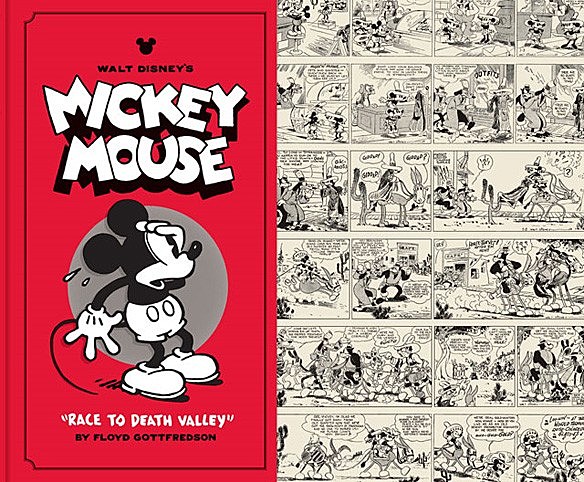
As to the book itself, Fantagraphics has done their usual amazing job of design on it, which shouldn't come as any surprise to anyone already familiar with the great work they've done on the archival reprints of Peanuts. The strips are crisp, there's a ton of bonus material (including biographical information, details on the process, and a bunch of additional strips), and the book even feels nice in your hands while you're reading it. They did a seriously remarkable job putting it together, which is fitting considering how good the material is.
The $30 price tag might seem steep, but there's almost 300 pages of quality reading to go along with it. It's a great collection, and one of the few that anyone who likes any sort of comics could -- and should -- pick up and enjoy.
More From ComicsAlliance







